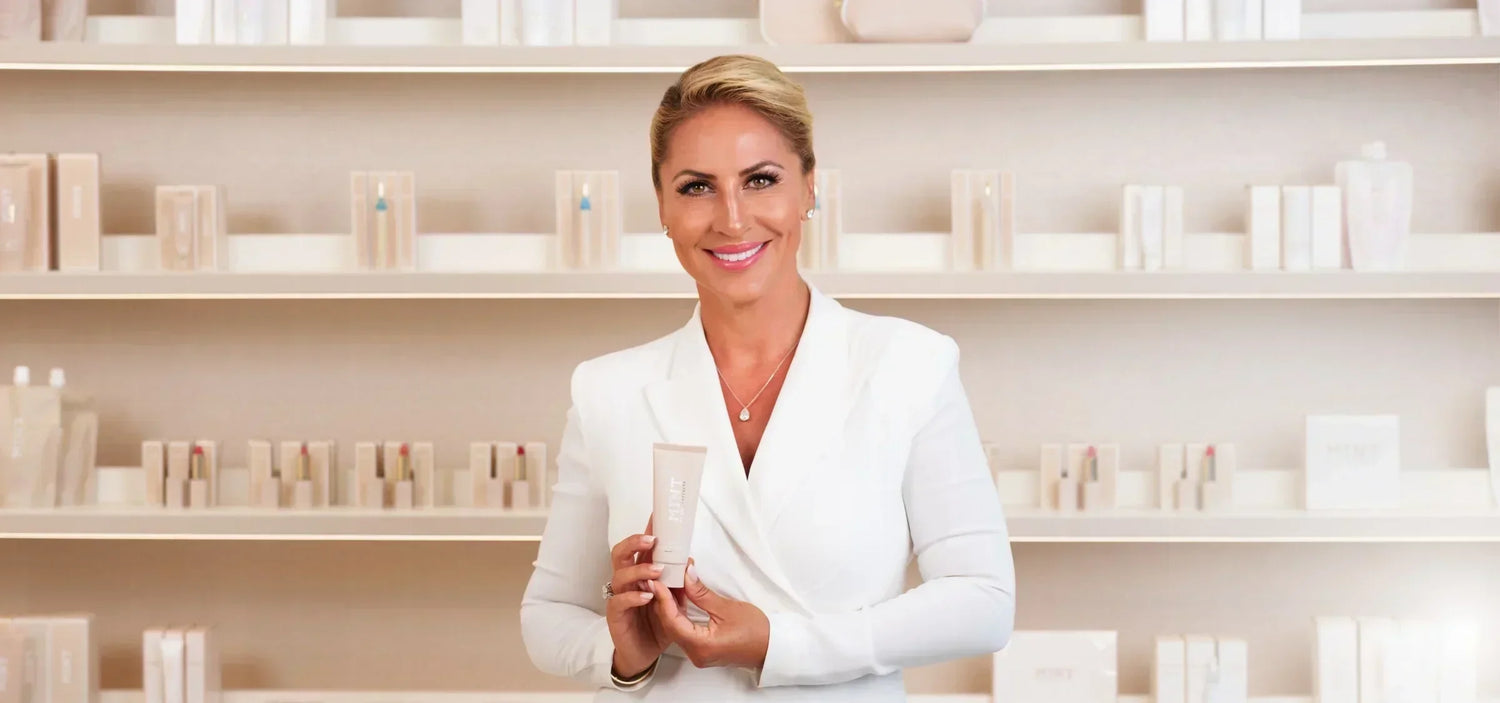Why is the topic "microplastic" on everyone's lips?
On my development journey, I was amazed at how many dental and oral care products contain microplastics. Microplastics were not a concept for me until then. But I really wanted to know what's behind this problem and whether that might be the reason why more and more of my patients are complaining about sensitive tooth necks. The sensitivity of the teeth to heat and cold is more of an issue than ever. The special thing about it is that the patients affected are getting younger and younger. My goal as a dentist is to ensure that my patients' teeth are preserved, which is why I got to the bottom of this phenomenon.
Whether as a cleaning agent in toothpastes or as peeling particles in peeling creams: microplastics have become an integral part of the cosmetics world. It is often only used for visual reasons, for example, to make toothpastes and peelings shine in particularly unusual colors or with the help of glitter particles.
Microplastics, on the other hand, consist of polyethylene and polypropylene and are therefore non-degradable. If you pour a little of the toothpaste through a fine sieve, many colorful balls remain in it at the end. Take the test at home! You will be amazed at how many of them remain in the sieve. Our sewage treatment plants are, therefore, completely overloaded. You cannot filter out such a high number of microplastics. Therefore, large parts of it get into the surrounding lakes and then into the seas, where it is in turn consumed by the fish. Ultimately, it is precisely this microplastic that ends up on our plates. It's not a really nice idea, but that's the bitter reality!
The current study situation
Many studies indicate that microplastics have now found their way into many foods, including drinking water and milk. A few years ago, researchers at the University of Vienna found tiny plastic particles in human stool samples. The amazing thing is that the subjects came from different parts of the world. Microplastics are, therefore, a global problem. In Germany alone, around 330,000 tons of primary microplastics are released each year.
The Federal Institute for Risk Assessment (BfR) is not surprised at the finding of microplastics in the human gastrointestinal tract. "The intake of microplastics [...] is to be expected, since toothpaste with microplastics, for example, can also be accidentally swallowed [...]" the BfR announced.
There are currently no meaningful studies on the effects of microplastics on the human body. However, one thing is already certain: In a survey by the BfR, more than half of the respondents were concerned about the occurrence of microplastics in food. Conceivable consequences could be a higher intake of harmful accompanying substances and the resulting inflammatory reactions.
According to a study by the University of Newcastle in Australia, the average human ingests up to five grams of plastic per week. That's about the weight of a credit card.
Conclusion: Microplastics not only pollute our seas, but also our food, drinking water, and even the air.
A wake-up call for the world
In its March 2019 report, the World Wide Fund for Nature (WWF) calls on all governments to take all necessary measures to reduce plastic.
The use of microplastics in cosmetics is banned in Great Britain, the USA, Canada, Sweden, and New Zealand. In Germany, too, there is a self-imposed obligation between industry and the government.
A gradual phase-out is planned for 2020. However, the latest studies show an opposite development: the number of products containing microplastics is increasing instead of decreasing.
However, the use of microplastics can be easily restricted, since environmentally friendly alternatives have long been available. This includes, for example, “cellulose”.




